18th June 2022
The Spokesmen Cycling Podcast
EPISODE 301: A Milan-shaped Conversation with Janette Sadik-Khan
SPONSOR: Tern Bicycles
HOST: Carlton Reid
GUEST: Janette Sadik-Khan
TOPICS: The miracle of Milan, with Janette Sadik-Khan.
TRANSCRIPT
Carlton Reid 0:13
Welcome to Episode 301 of the Spokesmen cycling podcast. This show was published on Saturday 25th of June 2022.
David Bernstein 0:28
The Spokesmen cycling roundtable podcast is brought to you by Tern bicycles. The good people at Tern are committed to building bikes that are useful enough to ride every day, and dependable enough to carry the people you love. In other words, they make the kind of bikes that they want to ride. Tern has e bikes for every type of rider. Whether you’re commuting, taking your kids to school, or even caring another adult, visit www.tern bicycles.com. That’s t e r n bicycles.com to learn more.
Carlton Reid 1:03
Last week’s episode was a travelogue about my Tourissmo bike holiday in Sardinia, including some chowing down of the world’s most dangerous cheese. I’m Carlton Reid and I travelled to Sardinia by train. One of the benefits of overland travel is the ability to stop off en route and I spent a bit more time in Milan than I was originally planning because of today’s guest. Janette Sadiq-Khan has been helping Mayor Sala of Milan with that city’s ambitious reimagination of the public realm. As a principal at Bloomberg Associates, Janette advises city mayors from around the world on their streetscapes. When she was New York City Transportation Commissioner, between 2007 and 2013, she famously transformed Times Square into a plaza for people, not cars. The same tactical urbanism — or try it, we think you’ll like it — was used in Milan. Guided by a Google Maps route through some of the city’s newly built people-friendly plazas I was able to see at first hand how, as Janette puts it, the miracle of Milan is taking shape. Milan also has an ambitious bikeway programme, and I rode on some of the newly minted protected routes as I criss crossed the city. I’ll include lots of photographs on a forbes.com story soon. But meanwhile, here’s my 20 minute conversation with Jeanette. Tell me about Milan’s Piazza Aperte. Am I pronouncing that right? Open squares. What’s it all about?
Janette Sadik-Khan 2:59
Well, I mean, we started working with Mayor Sala and his team in 2018. And we were coming up with a plan to bring life to streets in every neighbourhood in the city. You know, he had had this 2030 plan for a city, you know, that works better that’s more affordable and resilient, and, you know, cooler and cleaner in 10 years, you know, and you obviously can’t get there by you know, tearing down buildings or building new roads, you have to make better use of the streets that you already have. And you know, we know a lot about this having gone through a large scale sustainability plan with Mayor Bloomberg in New York City creating, you know, 400 miles of bike lanes and 70 plazas in six and a half years. So and it was something that I don’t think that a lot of New Yorkers thought was possible. And so we did meetings and workshops with Mayor Sala’s mobility and environmental teams, and and then in 2018, we launched this Piazza Aperte programme, and so and we inaugurated new piazzas in Durgano and Angilberto. Did you get to those two?
Carlton Reid 4:03
I did. I went to Spoleto. Yeah, I went to Durgano. Durgan was the first one about three years ago?
Janette Sadik-Khan 4:10
Yeah, exactly.
Carlton Reid 4:11
And then I went to the ping pong one. I mean, they’ve all got ping pong tables, but this one is now known as Ping pong. So Piazzale Bacone.
Janette Sadik-Khan 4:18
Yeah, I mean, the popularity of ping pong. In in Italy. I certainly didn’t.
Carlton Reid 4:25
I am assuming that the Olympic team in about 10 years time has come from
Janette Sadik-Khan 4:30
We’re going to be looking for that in 2024, actually. But we started with those two neighbourhoods, and those streets had had just become parking lots. And so it didn’t take years or millions of euros. We just we moved really fast with paint brushes and benches, and we transformed those spaces into, you know, places for people. And, you know, the result was really spellbinding. I mean, from the moment we put down the first benches people were sitting in them; even before we’ve finished bolting them to the ground. And so, you know, we actually have pictures of people sitting there while we were doing it. And it was, I don’t know, if you remember it was it was just like Madison Square Plaza in 2008, when we were just putting out the construction barrels, the orange construction barrels and an art class, you know, sat down in the paving, you know, in the first 30 minutes just to start sketching the buildings, you know; people are just so hungry for for public space. And we saw that in Durgano I mean, and particularly the kids, I mean, the kids came out in droves, you know, and they’re playing ping pong, and they’re running around, and their parents are on the benches, and, you know, people were doing exercise classes and boxing and again, can I say ping pong, I just, I had no idea it was such a big deal. I think it’s like the local sport. You know, at Times Square where we had beach chairs to unlock the spaces potential. But, you know, in Milan, if you really wanted to an empty space into an active space, you can’t miss with ping pong tables. So and you know, the thing that was really interesting, too, is that the local businesses hold the balls and the paddles. So people just, you know, pop in and check them out and return them. Isn’t that cool?
Carlton Reid 6:12
That was gonna be one of my question is like, yes, great to have the tables, but where do you get the ball? And where? Yeah, yeah. So you’re going to actually create custom there? Yeah,
Janette Sadik-Khan 6:20
Exactly. And it builds it just knits together, the community and all these new ways. So you know, the programme was just three theatres in 2018. And it grew to 13 Piazza isn’t in 2019. And it grew to a team during the very tough months of 2020. And, you know, you know, Milan is one of the first COVID epicentres. But you know, at the end of the day, and I think you have the report, the summation is 30 APR is in four years, which, you know, is particularly the infrastructure entire city, and now you’ve got, you know, five and a half acres of plazas, almost the size of Madison Square, and, you know, you’ve got to all these benches, you know, 250 benches, to entertain planters, bike racks, ping pong tables, you know, and now you’ve got 80% of residents within reach, you know, public space in a protected cyclepaths. So they literally change the map of Milan and showed that, you know, cities can move faster than the status quo. And I think that’s what’s so exciting about Milan,
Carlton Reid 7:27
and they can also move faster than national leaders, because that’s what I always hear is mayors can actually have more impact on climate change their national leaders, because they just, they’ve been able to move much quicker.
Janette Sadik-Khan 7:40
Absolutely. And, you know, I think you’re starting to see the kind of changes that you’re, that are you seeing in Milan are happening in cities across Europe and the Americas and all around the world? And, and because your mayor’s can make that difference? You know, you’re, we’re used to hearing this kind of ambition from from like Paris, right? You know, Mayor Hidalgo, converted Rue de Rivoli into a carfree corridor during the height of the pandemic. And this year, you know, she announced his $300 million plan to remake the Champs Elysees into this, you know, extraordinary garden of great pedestrian spaces, and reclaiming half of the city’s 14,000 parking spaces. And you heard about what Mayor Khan did in, you know, central London and creating this bus and bike and people, people focus zones, you know, all of these cities showed, you know, reclaiming space is more than just a local amenities. It’s really a global planning principle that can help save the planet and the way streets are designed. Its transportation policy, its economic policies, health policy, its equity policy, its sustainability policy. So, you know, I think if you want to transform a city and have an impact on the world, I think one of the most effective things you can do is reclaim and reimagine your streets for people. And that’s why you’re seeing these mayors embrace these changes. And these changes are popular, you know, the, you know, it used to be that, oh, we can change these, you know, you’d have a guaranteed job for life if you just follow the status quo. Right. And
Carlton Reid 9:09
the changes are also quick because of tactical urbanism. So where you can you’re testing stuff out with, you know, planters before you put the concrete in is is that is that is your modus operandi, obviously when you’re New York City’s transport Commissioner, is that something that Milan did as well they put these things in softly first.
Janette Sadik-Khan 9:31
Exactly. I mean, you can move quickly. I mean, we certainly saw a sea change in New York City 10 years ago. And you know, again, just showing what’s possible, you can paint the city you want to see in paint, you know, it doesn’t take years it doesn’t take millions of euros, you know, you can paint the outline of the city that you want to see and and doing it that way showing the the paint of the possible allows you to bring things down the anxiety that people have about the change, right? Because people think, okay, you’re doing this permanently, you know, I don’t like it, I don’t want it. And yet, if they think, you know, you’re trying out, we’ll see if it works, we’ll keep it, if not, we’ll put it back to the way that it was, you know, people are comfortable with that type of change. And you can’t argue that like, nothing should ever change, right? Think about how much has changed in our, in our society, in technology, economically, socially, politically. And yet, so many of our spaces stay the same way. They’re like, Jurassic Park streets, you know, they’re, like, trapped in amber. And so, you know, showing that it’s possible to make them work better. is, you know, it’s certainly been a recipe for success. And I think, you know, one thing that I didn’t mention is that, you know, Mayor Sala was reelected in the middle of this, you know, kind of miracle in Milan, and some of the candidates ran against the changes, you know, that he made during the pandemic. But you wouldn’t have known that from, you know, the 60s 56% of the support that he got in October. And, you know, and people do need to have their say, you know, but once you have city streets and public space filled with people, it’s hard to make the argument that it should be any other way. You know, it’s not the municipality space, it’s the people space, you know, and that’s what you see in Piazza after Piazza, you know, once the temperatures dropped in these complaints, you know, they’re, they’re actually replaced with the voices of other people who now who now want to be yachts in their neighbourhood.
Carlton Reid 11:35
Well, the before and after photographs in the PDF, the report, the piazza Pardo report, a very stark, they’re very welcoming. And you could show that to anybody and say, which would you rather have that with the cars or that with the people and the ping pong and the paint and the nice, and it’s like, you couldn’t really have a sense of like, with anybody who’s ever Well, I want the one with all those cars.
Janette Sadik-Khan 12:00
It’s so true. It’s so true. You know, I was, I visited, you know, in, in May, you know, last month with some of the leading actually some of the leading planners from Tel Aviv to show them the Milan story firsthand. And they were floored. I mean, they couldn’t believe what had happened in such a short time. And they, you know, they marvelled at it because they knew, you know, great urban spaces appear obvious, but you know, that can be difficult to design and implement. And, you know, I saw when we went to a coney, you saw that, you know, and when I first saw that first space in 2019, you can see the problem that was written in the street, you know, it’s it’s obsolete, traffic tangling next to the school, there was already a parka there, but it was out of reach, and it didn’t help the school kids. You know, and you know, the people that their caregivers who pick them up and drop them off every day, because the cars rolled the road, and they could drive everywhere and they could park anywhere and they double parked and triple parked everywhere. So, you know, redesigning it, narrowing the road and making the road one way and today it’s the kids not the cars that were on the road. And so you see the benches and the you know, where where it used to be car only spaces and you see these kids doing chalk drawings or you know, art projects and picnic tables and ping pong tables again, ping pong tables, you know, the ping pong tables, even a point on Google Maps.
David Bernstein 13:19
Hey, all you spokesmen listeners, I hope you’ll excuse the interruption. But this is David from the Fred cast and the spokesman. And I want to take a few minutes out of the show to talk to you about our sponsor Tern bicycles at www.tern bicycles.com. That’s t e r n, like the bird bicycles.com Tern are committed to building bikes that are useful enough to ride every day, and dependable enough to carry the people you love. Now, last time, I told you about Tern’s Quick haul ebike but today I want to talk to you about a sibling to the Quick haul. And that is the Short haul compact cargo bike. The Short haul is a practically priced wait till the end for the price. You’re gonna love it cargo bike that’s been designed to get a rider plus an extra passenger and cargo from home to work, to school, and everywhere in between. And I think that when you see a Short haul, you’ll realise that it may be unlike any cargo or city bike you’ve ever seen. That’s because most cargo bikes are big and unwieldy. And most city bikes while they’re easy enough to handle well, they’re just they’re just not able to carry much cargo. And that I think is why Tern designed the short haul. The Short haul is shorter than a regular city bike making it nimble and yeah fun to ride. But it was also designed with an extra long wheelbase and low centre of gravity then that gives you a stable ride even when you’re carrying heavy loads. In other words, the Short haul offers the best of both worlds packing a sturdy build and a hefty cargo capacity into a compact package that just simply rides better. With a mass Max gross vehicle weight of 140 kilos or just under 310 pounds. The short haul can easily carry an extra passenger and plenty of cargo. It’s got extra long extra strong rear rack and that is rated to carry a hefty 50 kilos or about 110 pounds. And it can be configured to carry a child and a child seat, an older kid, a small adult, maybe even a dog. In addition to its rear cargo capacity, it can also carry up to 20 kilos or about 44 pounds with an optional front mounted rack. Oh. And the Short haul accepts a wide range of Tern accessories, frankly to many dimension here, so that you can carry everything from a yoga mat to fishing poles to an ice chest or as I said before, even the family dog, and because of its size, you can easily manoeuvre in crowded or small places, including buses and trains plus like the quick haul, the short haul includes Tern’s vertical parking feature, so you can roll the bike into an elevator and park it in a corner of your apartment. Now, like I said before, safety is a core value at Tern. So that’s why the Short haul was designed and independently tested to ensure rider safety and that’s also why they use respected independent testing labs and why every turn bike undergoes rigorous testing to ensure that every bike meets or exceeds comprehensive safety standards. Oh and did I mention the price before we’ll get this at a suggested retail of $1,099 or 1249 euros. The Short haul is turned most affordable cargo bike yet. Bikes are scheduled to start arriving in stores in q3 of 2022. So start getting your orders in now. And for more information about the short haul or any of terms wide range of bikes, just head on over to tern bicycles.com That’s t e r n bicycles.com We thank turned for their sponsorship of the spokesmen podcast. And we thank you for your support of Tern. Also, thanks for allowing this brief interruption, everyone. And now back to Carlton and the spokesmen.
Carlton Reid 17:22
Thanks, David. And we are back with my conversation with Jeanette Sadiq Khan. Now Bloomberg has a programme called paint for streets, isn’t it? Yeah,
Janette Sadik-Khan 17:32
it’s the asphalt art, the Bloomberg asphalt Art Initiative.
Carlton Reid 17:35
So how did the cities apply for that? Do you
Janette Sadik-Khan 17:38
Yeah,
Carlton Reid 17:38
where did where did they where? How could somebody get that for their city?
Janette Sadik-Khan 17:42
Yes. So we started in North America and you applied. We gave $25,000 grants to cities to 25 cities. You can look it up on the website. There’s all the information is there and beautiful, beautiful pictures and I can send you some others if you’d like and now and we’re going to launch at City Lab, we’re going to launch the European version of the asphalt Art Initiative. And so cities will be able to apply for asphalt art grants from Bloomberg Philanthropies starting in October.
Carlton Reid 18:15
Oh, that sounds good. Okay, I’ll prime my city for that one, please. Yes, yes. Apply for that, please. Newcastle. Going back to Milan. It hasn’t just got these piastres which are wonderful. It’s already I mean, partly this is done in the Coronavirus crisis, but it was I think was before there as well, which is the star day or per day so the open streets the bike lanes based in Milan is going to become this this effect on Amsterdam. You know we you know, we mentioned Paris went to New York, but Milan is really going ahead with a really ambitious scheme but before 2035 of 750 kilometres of protected bike lanes. So how much of that was Coronavirus? Or was Coronavirus? Just kind of like gave it a little bit of a fillip.
Janette Sadik-Khan 19:06
You know, I think it was a an impetus, right? I mean, I think what you saw was mayor’s around the world, actually, you know, when city shut down, you know, when you saw like just these empty streets everywhere, right? I mean, they were like ghost towns, you Times Square, you know, which used to be, you know, crossroads of the world became the epicentre of the pandemic, it was like, you know, look like a horror movie. I mean, I saw this picture in Chicago coyotes like walking the streets of Chicago, you know, but it also showed what the possibilities were in the streets and so as many cities shut down one of the first things they did was open their streets, you know, when they open their streets for people to walk they open the streets for restaurants giving them a lifeline you know, open their streets for sidewalk cafes. It was it was incredible to see what was possible new pop up bike lanes, new bus lanes. And so but I think that Elon really kept the momentum going through the pandemic. And I think now that the worst is passed, you know, they’re ready to move into the next phase. And there’ll be actually announcing the next phase of their Piazza is and started a party’s this fall. So I really think if you want to see the future of cities, you can look to the streets of Milan, they’ve created an architecture of public space, but, but also a process. It’s kind of a master class for what cities everywhere could do with the same raw materials, and a little imagination.
Carlton Reid 20:34
Yes, but it’s, it’s kind of ambitious, what they’re doing, and what other many other cities are doing. But in your 2016 book, I’m going to plug your book here, street fight, doesn’t always have to be a fight. Because the other thing that was a subhead to your book was revolution. These are these are these are, these are strong words, these are fighting words, but does it have to be a fight?
Janette Sadik-Khan 20:59
Well, you know, I think that in almost every case, you know, whether it’s Durga, no ankle, berteau Times Square, you know, root of everybody, you know, they’re strong reactions, right. And when Milan first proposed turning parking into places for people, you know, there were very strong reactions, people have very strong feelings about their streets, you know, I like to say they’re 8.6 million New Yorkers, and they were 8.6 million traffic engineers, because everybody has very strong opinions about their streets. And that’s a good thing, right? We want people to feel strongly about their streets, their, their front yards, that’s where life is lived is where the first that’s the first experience of the day. You know, but I think it’s really important to have a, you know, a community process, you know, too, as part of the programming. And so, there was an involved community process in Milan, on everything from the concept of the design, to the programming in the space so that each Piazza reflected local colour. And so, you know, the whale shaped Piazza outside Tommaso school, on stiletto came straight from the imagination of the students themselves, you know, the planters at Viva la marina were specifically requested by the locals to plant vegetables, you know, and the locals helped pick up the paint brushes at porta Genova. And, you know, I’ve been put on a spot and, you know, started painting at porta Genova. And many passers by did too, you know, we had food, food delivery workers that parked their bikes, and came to help us paint. So it really took a village to, you know, bring these places to live. And so, you know, and once we saw after the painting was done, you know, the benches, the benches were there, and the nets were on a ping pong tables, you know, people love these places, and the complaints were really replaced with, with really the kind of sounds of support from communities and, you know, community involvement as a part of it, not everybody’s going to be on board, not everyone’s going to agree that there’s even a problem. And it’s so important that the municipality show leadership and, and respond not to just what you think your short term needs are. But But But building in New possibilities so that when you open your door in 10 years, you have more transportation choices, you have safer streets, and you have, you know, better cities than you do today.
Carlton Reid 23:28
It’s kind of like that, that very famous cartoon, at a climate conference where there’s somebody, you know, standing on a podium saying, you know, we’re going to have all of these things that are going to improve our lives. And hear you it’s not just clap, if you if you mitigate against climate change with these kinds of measures. Not only are you mitigating climate change, you’re also making it just much much nicer for people.
Janette Sadik-Khan 23:53
Exactly, exactly. You know, you invest in you, and you see the direct results, you know, it’s not about talking about or pledging that it’s making change happen on the ground. And that’s what’s so powerful. One of my favourite cartoons was the New Yorker cover, which was a picture of like, I don’t know, if you remember this, it was like people in a gym working out on bikes, and then you know, people parking in other city bikes in front of the gym. It’s, you know, you can build in all sorts of possibilities and choices for getting around and sitting around and enjoying and socialising. You can build that in, you know, to your city, working with just the materials you have on hand. You know, the materials that any Department of Transportation has on hand, you can make these changes and, you know, there’s no you know, it, it’s great, the most important time to do this as now, you know, and and you’re seeing mayor’s walk the walk and I think it’s really exciting to see
Carlton Reid 24:51
should we have more transit strikes because here in the UK, I don’t know if you’ve seen but we’ve the whole of the country has shut down for the best part of this week. because of a train National Train, strike, but what you’re seeing from from newspapers, and the mainstream media reporting, this is people who would never normally get on bikes are suddenly getting on bikes and are probably realising for the first time. Like, that’s only a 10 minute journey. Why have I done that by, you know, other methods when this is just so easy and nice as hell, but it’s quite nice wherever I was in the UK, but should we should we somehow get people to experience these things? You know, you can’t mandate transit strikes, but somehow getting people to try these.
Janette Sadik-Khan 25:41
Look, I think I think what it shows again, it’s also building resiliency, right? That’s another piece of it. Like, it’s another way of getting around, we saw you know, during the pandemic, people turn to walking and biking and other modes of getting around because there was, you know, the early fears that you know, transit was a super spreader, which of course, it was not as it turned out, and people turn to the private automobile, but you saw a skyrocketing number of people cycling and I think you’re seeing on in London too, particularly now that you’ve got the infrastructure in place, you know, you can’t wish people onto a bike if they don’t feel safe riding right? And so creating the safe infrastructure is really key. And, you know, also people you see the city in a new way, you know, and if they feel like they’re in a safe lane and they see their city in a new way, you know, it’s joyful and and it’s also better for business. You know, when we put down protected bike lanes, very first ones Eighth Avenue and Ninth Avenue in New York City, retail sales along those corridors went up 49%. So you know, you know, if you want a better city, you can start by building a bike lane.
Carlton Reid 26:52
Thanks to Janette Sadik-Khan and thanks to you for listening to Episode 301 of the spokesmen cycling podcast. Show Notes and more can be found on the-spokesmen.com. The next episode is a chat with two finishes of the all points north Ultra distance cycling race. Meanwhile, get out there and ride
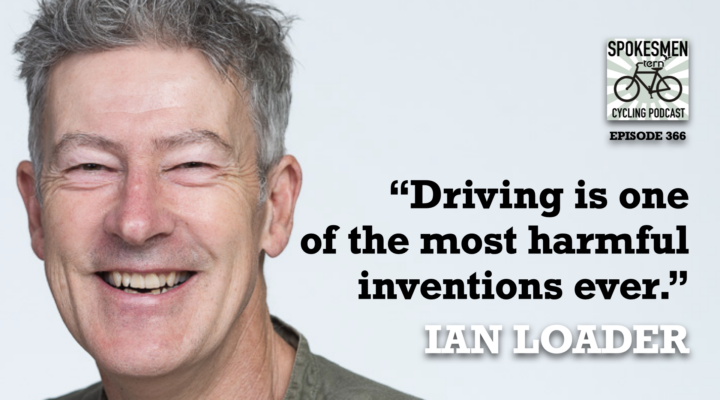
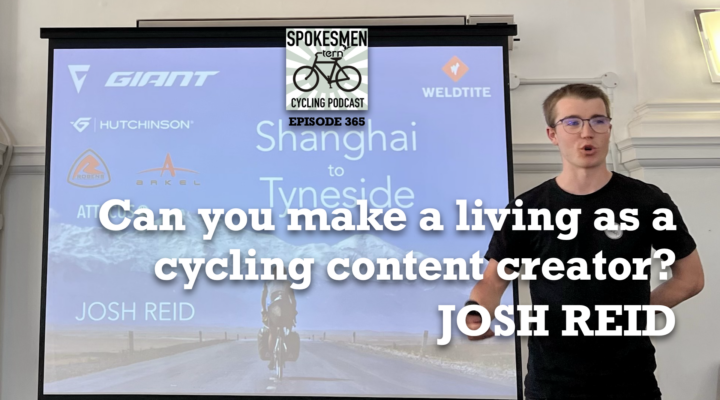
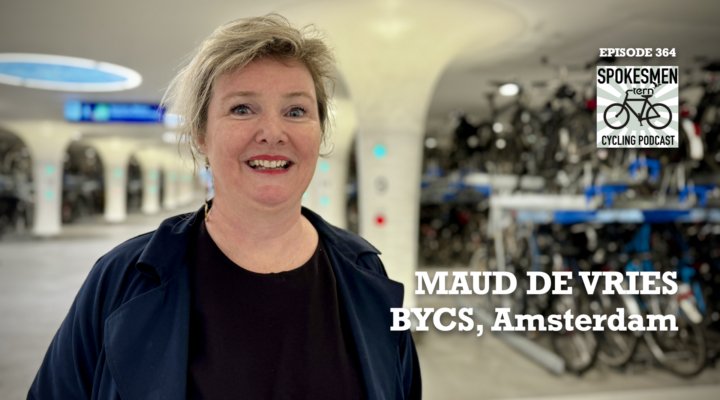
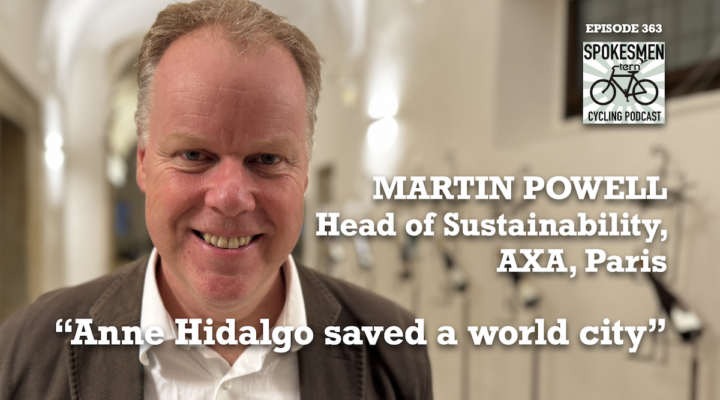
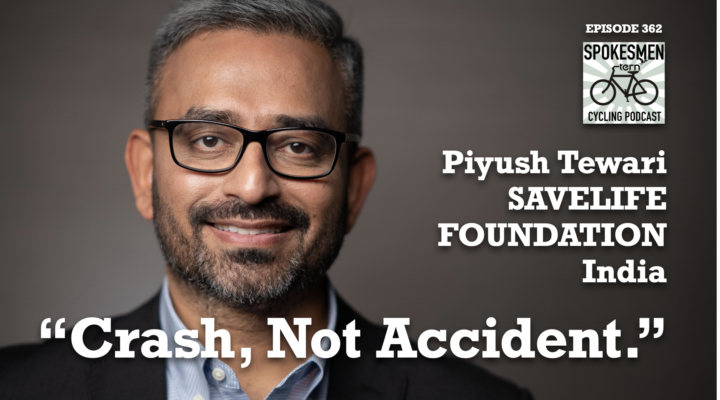
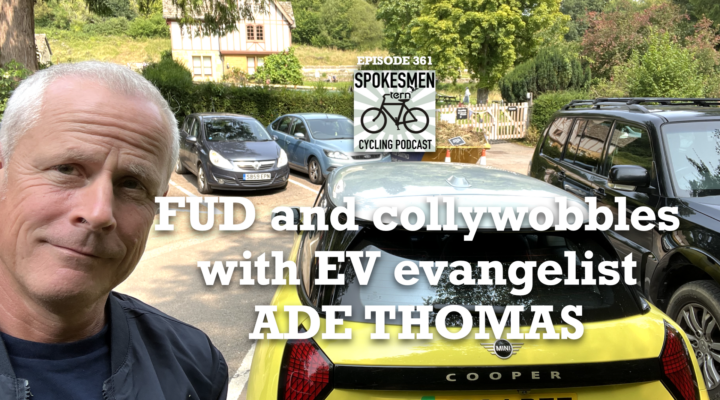
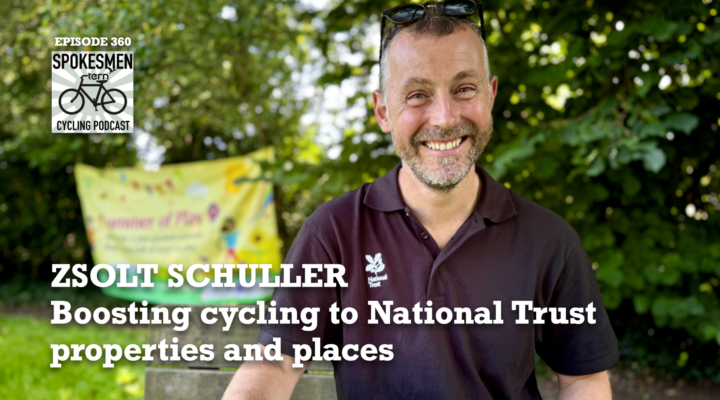
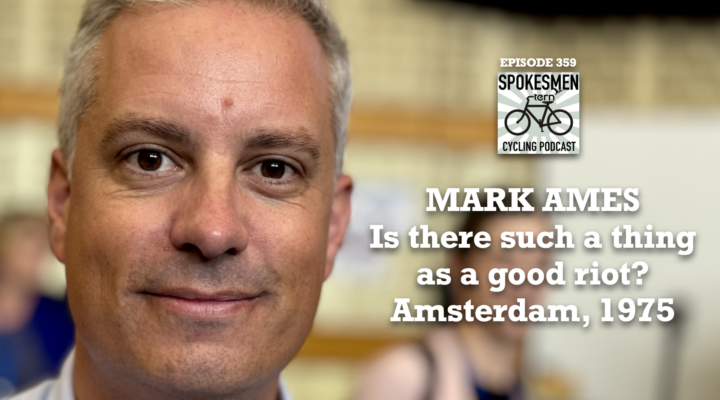
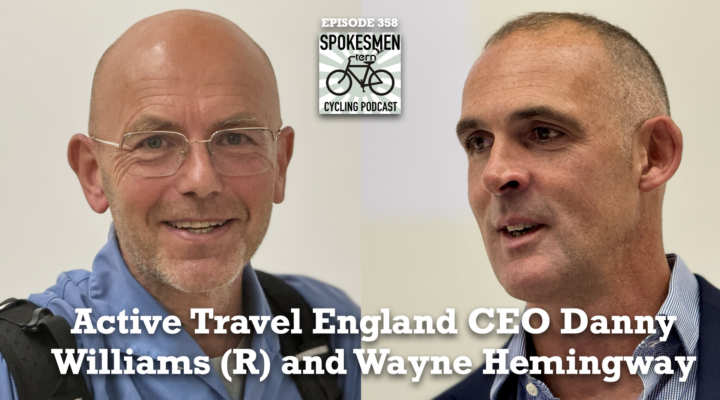
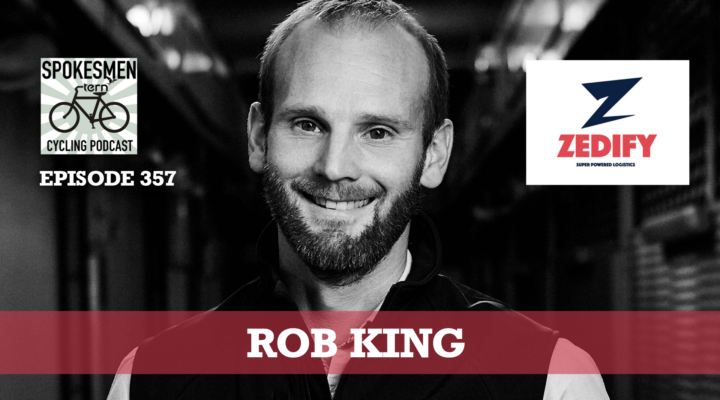
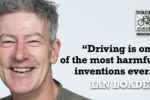
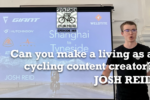
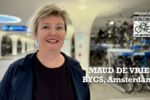
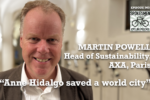
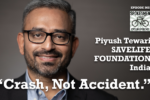
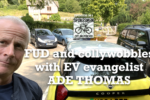
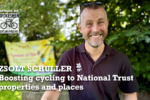
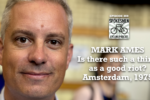
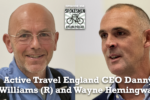
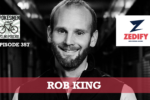
Be First to Comment